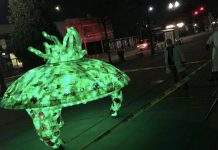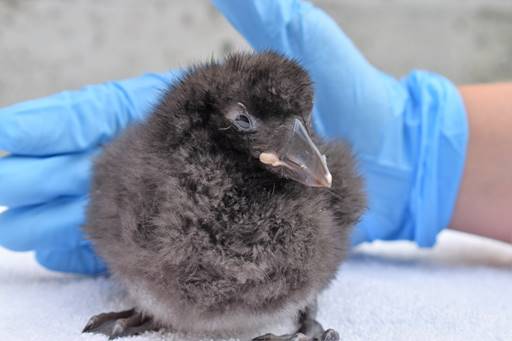Submitted by Point Defiance Zoo & Aquarium
A tiny, horned puffin is doing well at Point Defiance Zoo & Aquarium this week following its hatching last month in the Rocky Shores habitat for sea birds.
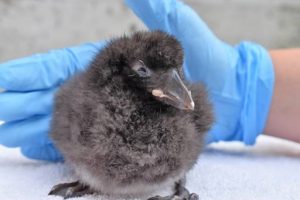
The chick’s parents take turns feeding it, and visitors can see them going to and fro with food, or watching over the nest box, she added. Earlier this year, zookeepers took the initiative to build nest boxes for the horned puffins.
They consulted with experts at the Alaska Sea Life Center to build boxes for the mating pair – “an effort that really paid off,” said zoo General Curator Karen Goodrowe Beck.
Zookeepers talk about horned puffins, tufted puffins and common murres during a puffin feeding presentation at noon each day.
Staff won’t know whether the chick is male or female until it’s old enough for staff to collect a small blood sample from which gender and general health status can be determined, Roberts said.
A well-chick check-up from a zoo veterinarian on Saturday found the baby puffin to be in good health.
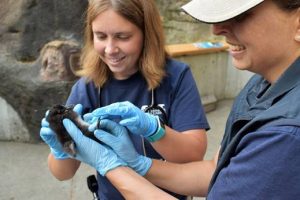
The incubation period for a horned puffin is 40 days. And once it hatches, it spends 40 more days in the burrow until it fledges, or has grown old enough and gained the necessary strength and feathers to go out on its own.
Right now, it looks like a black-and-gray ball of fluff with a dark gray beak, but as it grows, it will take on the full black-and-white body of a horned puffin, and its beak will turn a distinctive yellowish-orange with a red tip.
Adult horned puffins also have bright orange feet and legs. They are members of the auk family, or birds characterized by short wings, thick beaks and with excellent swimming and diving abilities. During breeding season, horned puffins have characteristic “cheeks” with a “horn” above the eyes.
They are found on the coasts of Japan, Russia, British Columbia and Alaska, and they spend winters in the ocean as far south as the Washington coast.
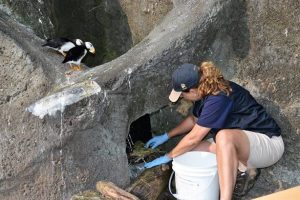
Like all sea birds, horned puffins face a number of threats in the wild, including predators, oil spills, plastic pollution, over fishing and entanglement in fishing nets.
In addition to its horned puffin colony, Point Defiance Zoo & Aquarium has a complement of 21 tufted puffins and seven common murres living in the Rocky Shores sea bird habitat.
For more information, go to the Point Defiance Zoo & Aquarium website.

















